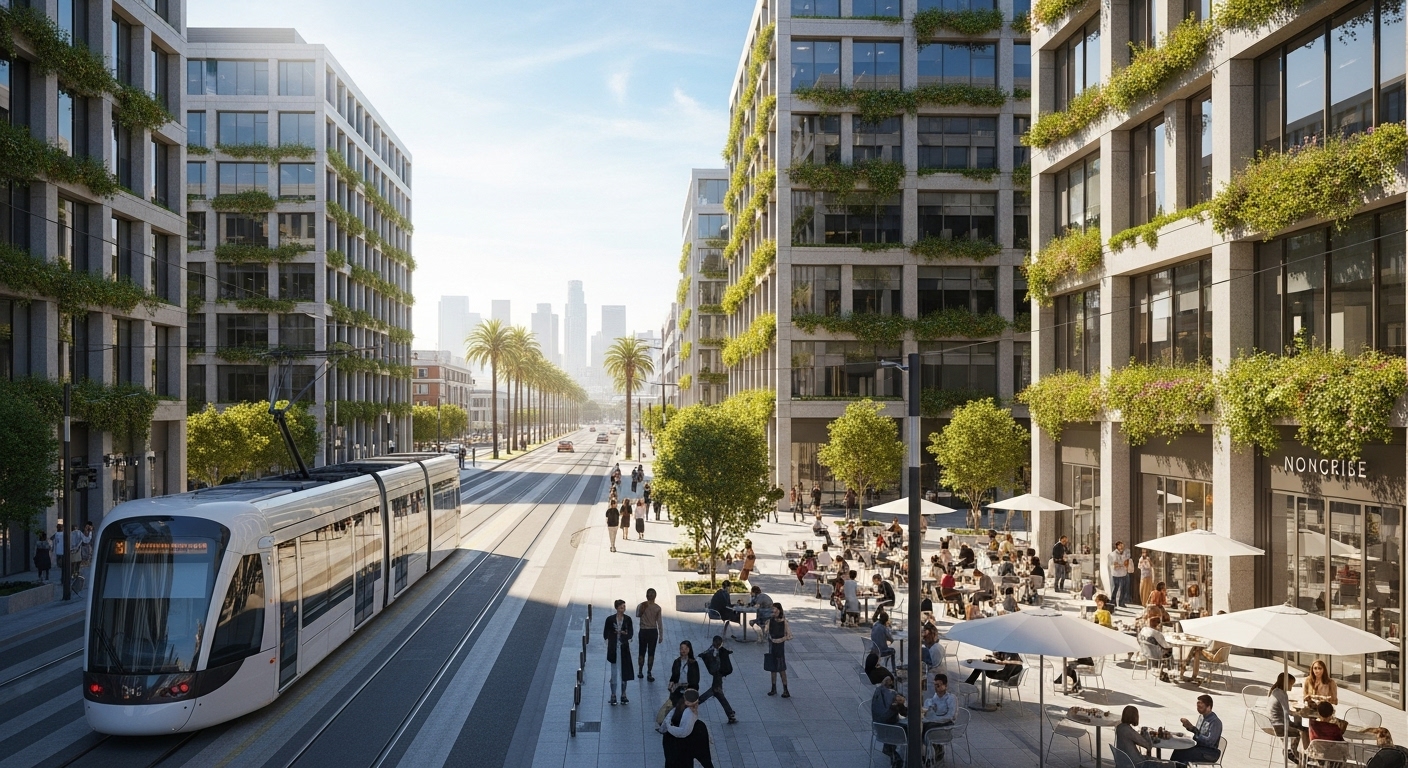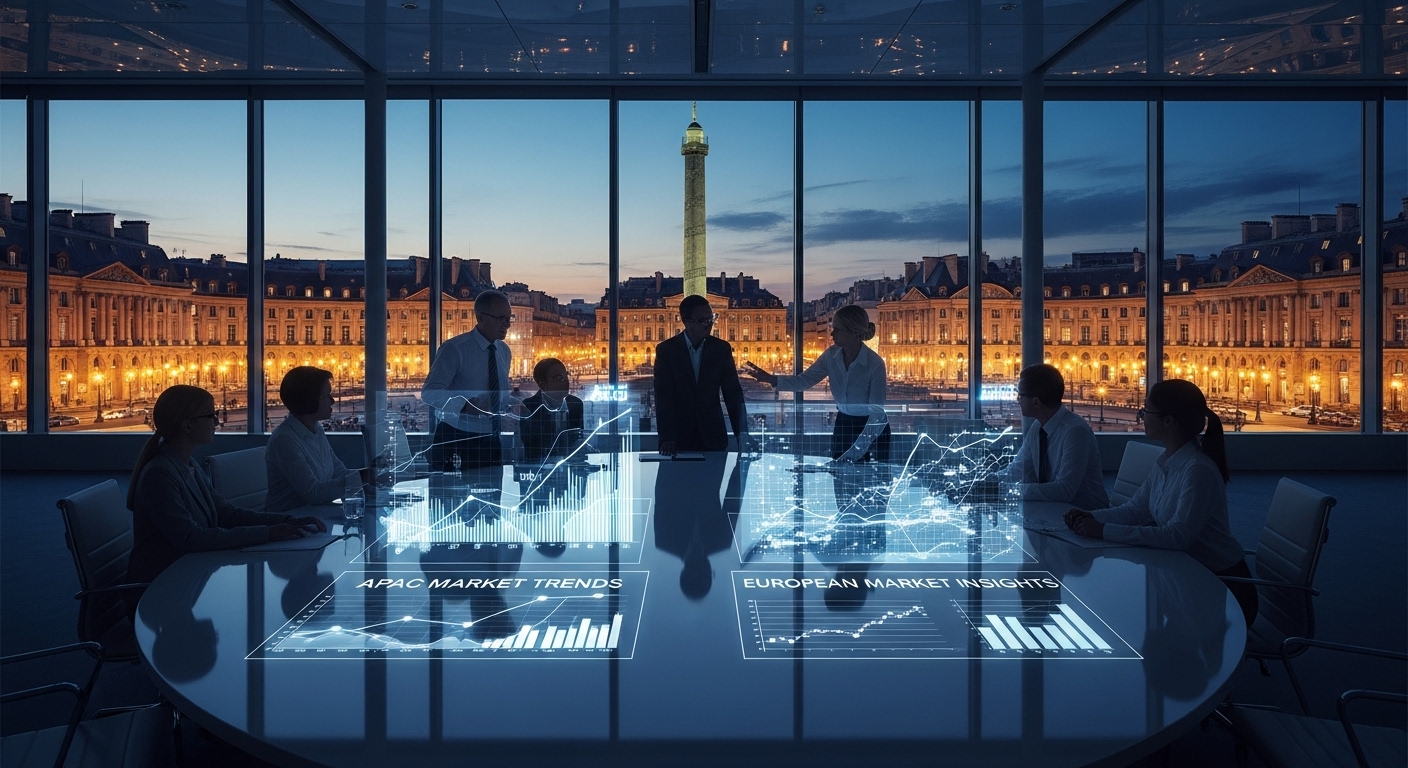Los Angeles, a metropolis defined by its sprawling freeways and distinct urban villages, is at a pivotal moment in its evolution. As the city grapples with challenges of sustainability, transportation, and quality of life, its business districts are under pressure to transform. While Silicon Beach and Downtown LA are dynamic hubs of innovation, their structure often reflects a 20th-century model. Across the Atlantic, European business districts offer a compelling alternative—a blueprint for creating dense, connected, and human-centric commercial ecosystems. From the hyper-modern Zuidas in Amsterdam to the revitalized HafenCity in Hamburg, these districts prioritize public transit, mixed-use development, and cultural integration over automotive dominance. This analysis explores the key strategic lessons that Los Angeles can glean from its European counterparts, providing a roadmap for building more resilient, productive, and livable business environments for the future. We will delve into how principles of sustainability, connectivity, and curated innovation can be adapted to the unique Southern California landscape.
The European model: a focus on density and connectivity
One of the most striking differences between American and European business districts is the foundational emphasis on density and public transportation. In cities like Paris, La Défense is not merely an island of skyscrapers but a multi-modal transit hub, seamlessly connecting regional trains, the Métro, and tramways. This integration makes car ownership a choice rather than a necessity for the thousands who work there. Similarly, London’s Canary Wharf, once a derelict dockland, was reborn around the Jubilee Line and Docklands Light Railway, ensuring efficient movement of its massive workforce. This approach fundamentally contrasts with the traditional development pattern of many US cities. The European model demonstrates that high-density commercial space is only sustainable when supported by robust, multi-layered public transit. This reduces congestion, lowers carbon emissions, and creates a more dynamic street-level environment where people can move freely. For a city like Los Angeles, which is heavily investing in its own metro expansion, these examples provide a powerful case for transit-oriented development (TOD) as the central organizing principle for the future of its business hubs.
Integrating culture and commerce in historic centers
Many of Europe’s most successful business districts don’t exist in a vacuum; they are woven into the historic and cultural fabric of their cities. Dublin’s ‘Silicon Docks,’ for example, is home to global tech giants, but it resides within repurposed 19th-century warehouses and historic dockland buildings. This blend of old and new creates a unique sense of place that sterile, new-build office parks cannot replicate. It attracts talent seeking character and authenticity in their work environment. This approach fosters a vibrant ecosystem where cafes, pubs, galleries, and public spaces thrive alongside corporate headquarters. It proves that economic development and historic preservation are not mutually exclusive but can be mutually reinforcing. This strategy of adaptive reuse and cultural integration holds immense potential for older industrial areas or historic downtowns looking to attract new industries. By preserving architectural heritage while integrating modern infrastructure, cities can create business districts with a soul, making them more attractive for both companies and the talent they seek to retain.
Sustainability as a cornerstone of modern development
European business districts are increasingly leading the world in sustainable urban design. HafenCity in Hamburg, one of Europe’s largest urban regeneration projects, is a prime example. It was designed from the ground up with strict environmental standards, including green roofs, advanced energy-efficient buildings, and a mobility concept that prioritizes walking, cycling, and public transport. Stockholm’s Hammarby Sjöstad district operates on a closed-loop eco-cycle, where waste, water, and energy are recycled and reused within the community. These are not just token green initiatives; they are core principles that define the economic and social value of the districts. Companies are drawn to these locations because a sustainable workplace aligns with their corporate values and helps attract environmentally conscious talent. For a region facing significant environmental pressures, the lessons from these eco-districts are critical. Implementing large-scale green building standards, investing in renewable energy infrastructure, and designing for sustainable mobility can transform business districts in Los Angeles from contributors to environmental problems into showcases of climate-positive innovation.
Fostering innovation through curated tech ecosystems
Europe has learned that simply building office towers is not enough to create a thriving innovation hub. Instead, successful districts actively curate an ecosystem that fosters collaboration. Berlin’s Adlershof Science City is a powerful model, co-locating university institutes, non-academic research centers, and hundreds of technology companies on a single campus. This proximity creates what urbanists call ‘knowledge spillover,’ where chance encounters in a cafe can lead to groundbreaking partnerships. Similarly, Station F in Paris, the world’s largest startup campus, brings thousands of entrepreneurs under one roof with venture capitalists, corporate partners, and essential business services. This curated approach accelerates growth by providing startups with the resources and networks they need to succeed. It’s a departure from the more organic, sprawling growth of some tech hubs. The key takeaway is the importance of intentional design—creating spaces and programs that actively encourage interaction, mentorship, and cross-pollination of ideas between academia, startups, and established corporations.
The rise of mixed-use districts for work-life integration
The traditional 9-to-5 business district that becomes a ghost town after hours is an outdated concept in Europe. The new paradigm is the 24/7 neighborhood, where commercial space is integrated with residential, retail, cultural, and recreational facilities. Amsterdam’s Zuidas district is a prime example of this evolution. Initially a pure office district, it is now being transformed with thousands of new apartments, restaurants, schools, and green spaces. This creates a vibrant community where people can live, work, and play without long commutes. This model of work-life integration is a powerful magnet for talent, especially among younger generations who prioritize lifestyle and convenience. By creating a complete neighborhood, cities make business districts more resilient, less dependent on peak commuter traffic, and ultimately more desirable places. The development of vibrant, walkable, mixed-use communities is not just an amenity but a competitive advantage in the global race for talent.
Applying European lessons to the California landscape
Translating these European principles to Southern California requires adaptation, not imitation. The sprawling geography and car-centric culture present unique challenges, but also opportunities. The ongoing expansion of the Metro system provides the backbone for creating dense, walkable hubs around new stations, mirroring the transit-oriented success of La Défense. In Downtown, the adaptive reuse of historic buildings can continue, creating a district with the character and cultural appeal of Dublin’s Silicon Docks. For newer hubs, the sustainability-first approach of HafenCity offers a blueprint for creating green, resilient commercial centers prepared for the challenges of climate change. Finally, the concept of a curated ecosystem can be applied to further strengthen the connection between universities like UCLA and USC and the tech and entertainment industries. The goal is not to replicate Amsterdam or London, but to use their successes as inspiration to build a future for Los Angeles that is more connected, sustainable, and human-scaled.
In conclusion, the future of successful business districts lies in a holistic approach that moves beyond monolithic office parks. The leading European models champion a potent combination of high-density, transit-oriented development, deep cultural integration, and a foundational commitment to sustainability and work-life balance. They are not just places of work; they are vibrant, resilient urban neighborhoods designed for people. For Los Angeles, a city built on reinvention, these principles offer a powerful vision. By embracing density around its growing transit network, weaving commerce into its diverse cultural landscape, and prioritizing green design, the city can redefine its commercial centers for a new era. The challenge is to adapt these global best practices to the unique context of Southern California, creating business districts that are not only economically prosperous but also environmentally sustainable and socially enriching. The path forward requires bold planning and a long-term vision to build a more connected and livable metropolis for generations to come.





